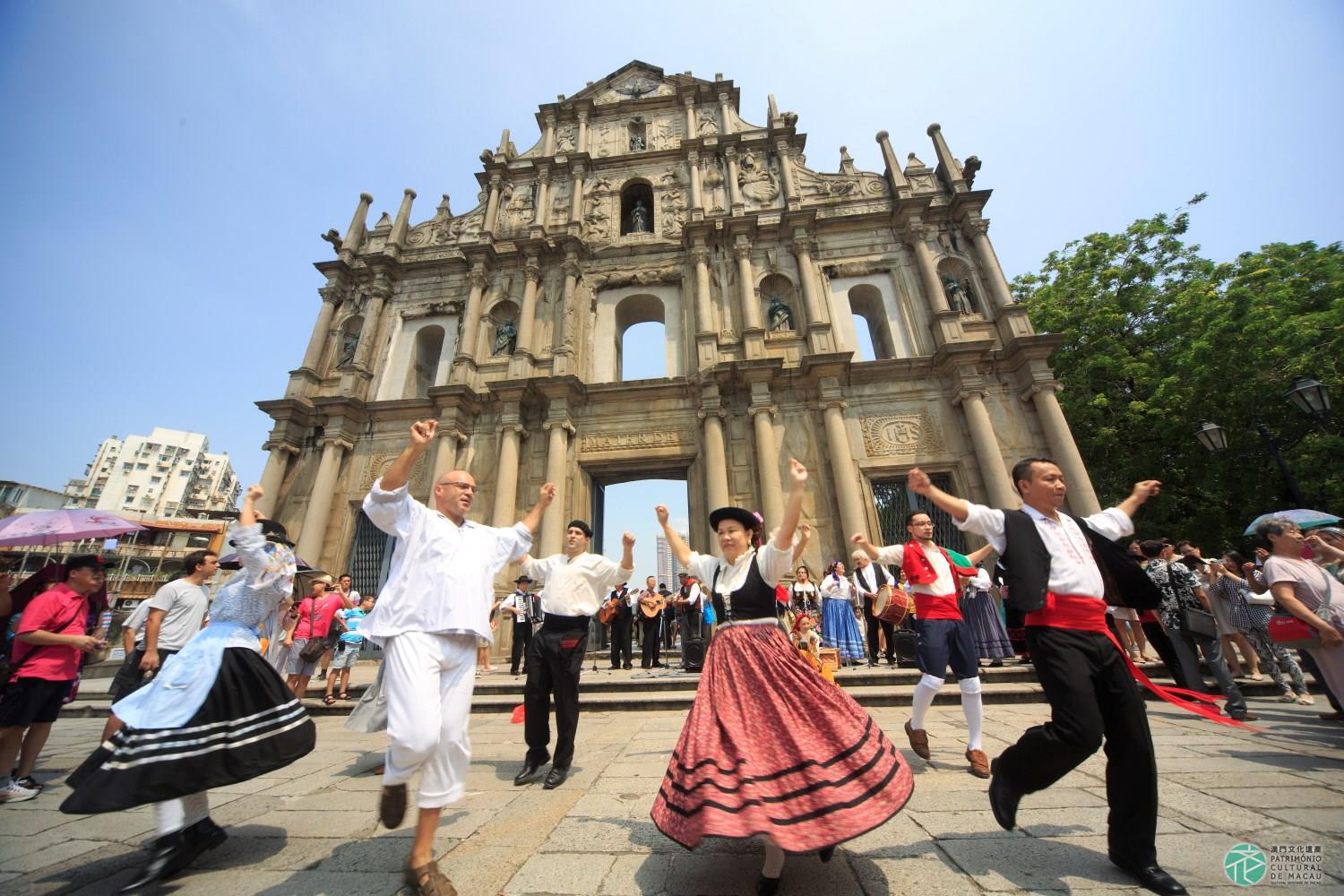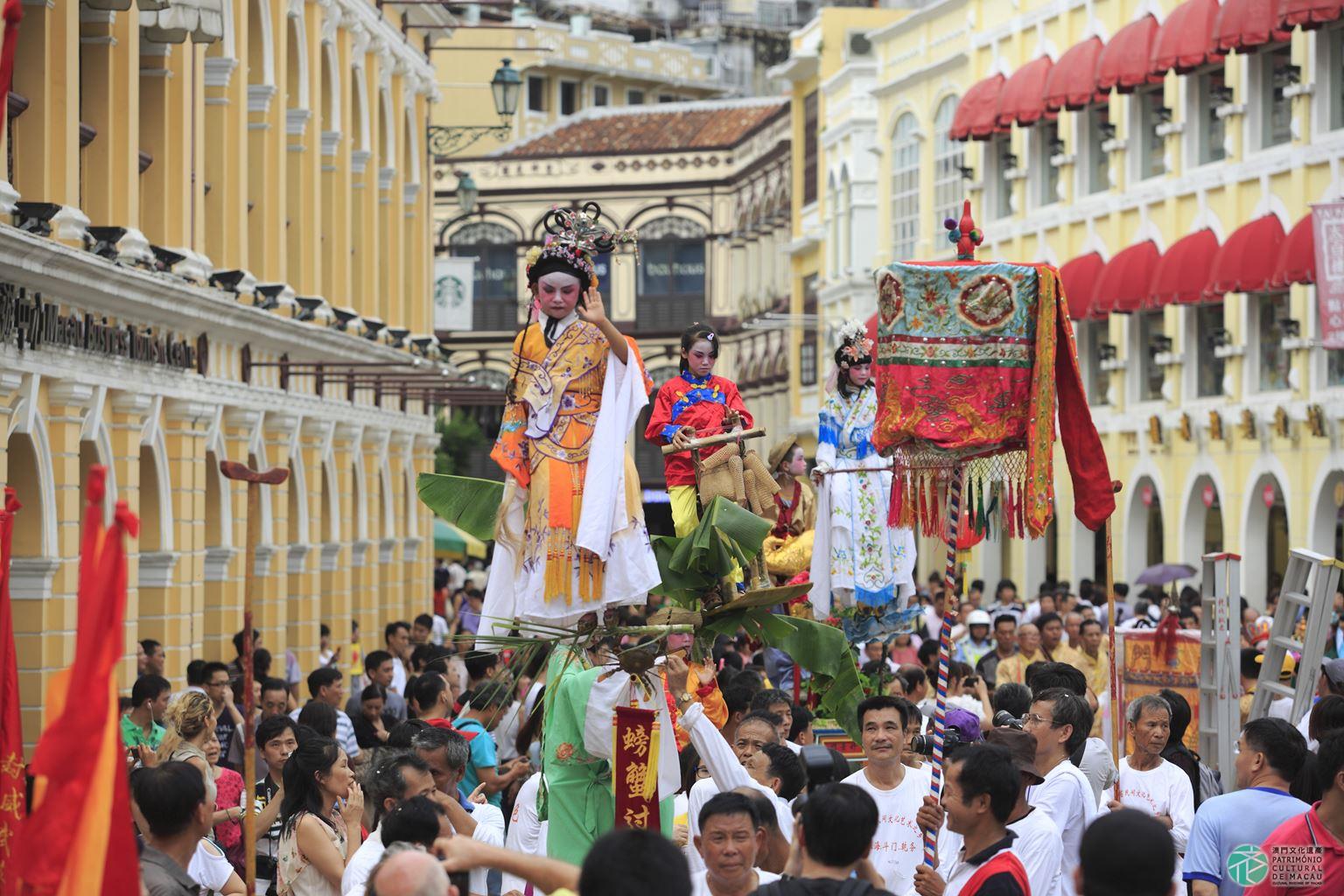As a place of meeting of cultures, Macao has rich and diversified popular customs. For over four hundred years, chinese and western cultures have taken root and grown here together, creating the unique cultural landscape and precious intangible cultural heritage of Macao.
Intangible cultural heritage refers to the practices, representations, expressions, knowledge and skills, as well as the instruments, objects, artifacts and cultural spaces associated therewith, which the communities, groups and, in some cases, individuals recognize as part of their cultural heritage. This intangible cultural heritage, transmitted from generation to generation, is constantly recreated by communities, groups and individuals in response to their environment, their interaction with nature and their history, providing them with a sense of identity and continuity. The scope of intangible heritage includes: oral traditions and expressions, performing arts, social and religious practices, rituals and festive events, as well as knowledge and practices concerning nature and the universe, and traditional craftsmanship.
In order to strengthen the protection of Macao’s intangible cultural heritage, when the Macao SAR government prepared the law for the protection of Macao's cultural heritage (Cultural Heritage Protection Law – Law No. 11/2013), the intangible cultural heritage was included as an object of protection, becoming a milestone of policy development and legislative advancement in this field. This law dedicates a specific chapter to protective measures related to the safeguard of Macao's intangible cultural heritage, also defining the scope of what constitutes intangible cultural heritage, while also establishing the criteria, inventory procedures, emergency response mechanisms and the duties inherent to the transmitters of this type of heritage, among other standards, altogether representing a significant advancement.
According to the law, the intangible cultural heritage is protected through the drafting of the respective Inventory and the preparation of the resulting List. In fact, the Inventory is the basis for the protection of the intangible cultural heritage, and the items of intangible cultural heritage are identified through surveys and protected accordingly afterwards. The items with significant value, including expressions that reflect important social traditions, are then inscribed on the List in order to further strengthen their protection.
As of June 2020, a total of 70 items in Macao have been recorded on the Inventory of Intangible Cultural Heritage, with 12 items inscribed on the List of Intangible Cultural Heritage.
In addition, and in order to further enhance the recognition and protection of the local intangible cultural heritage and to promote it further in Macao and in the mainland China, the Cultural Affairs Bureau (IC) has also actively pursued the presentation of applications to the Representative List of National Intangible Cultural Heritage.
At present, there are a total of 11 items of Macao inscribed on the mentioned National Representative List, including: Cantonese Opera, Herbal Tea Brewing, Woodwork - Religious Figure Carving, Cantonese Naamyam (Narrative Songs), Taoist Ritual Music, Festival of the Drunken Dragon, Belief and Customs of A-Ma, Belief and Customs of Na Tcha, Macanese Gastronomy, Patuá Theatre and Belief and Customs of Tou Tei.
IC will continue to promote the survey of the local intangible cultural heritage, thereby continuously updating the Inventory of Intangible Cultural Heritage of Macao and the List of Intangible Cultural Heritage, protecting in this manner the items in Macao that fulfill the necessary requirements and enabling their adequate protection.
At the same time, IC will continue to provide and build more information platforms in order to support and encourage the associations connected with the organization of activities of intangible cultural heritage, enabling further protection and promotion.

